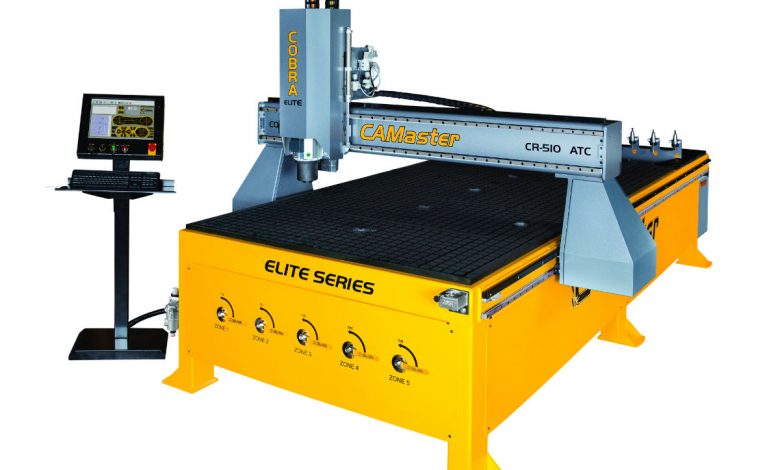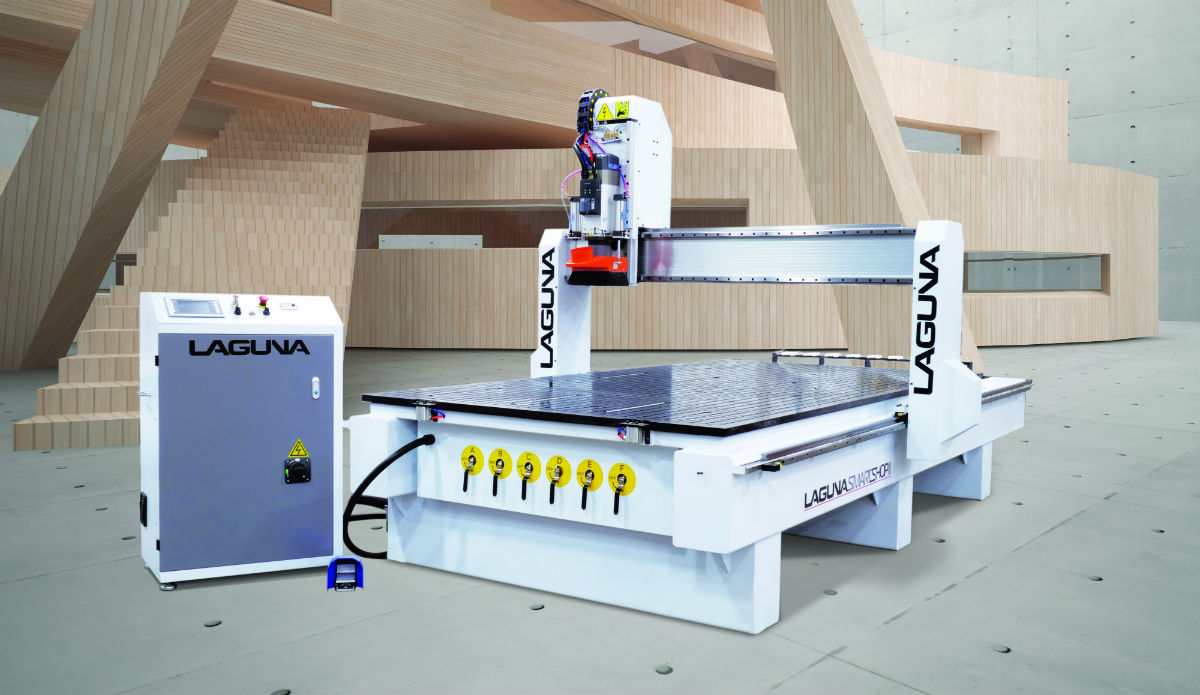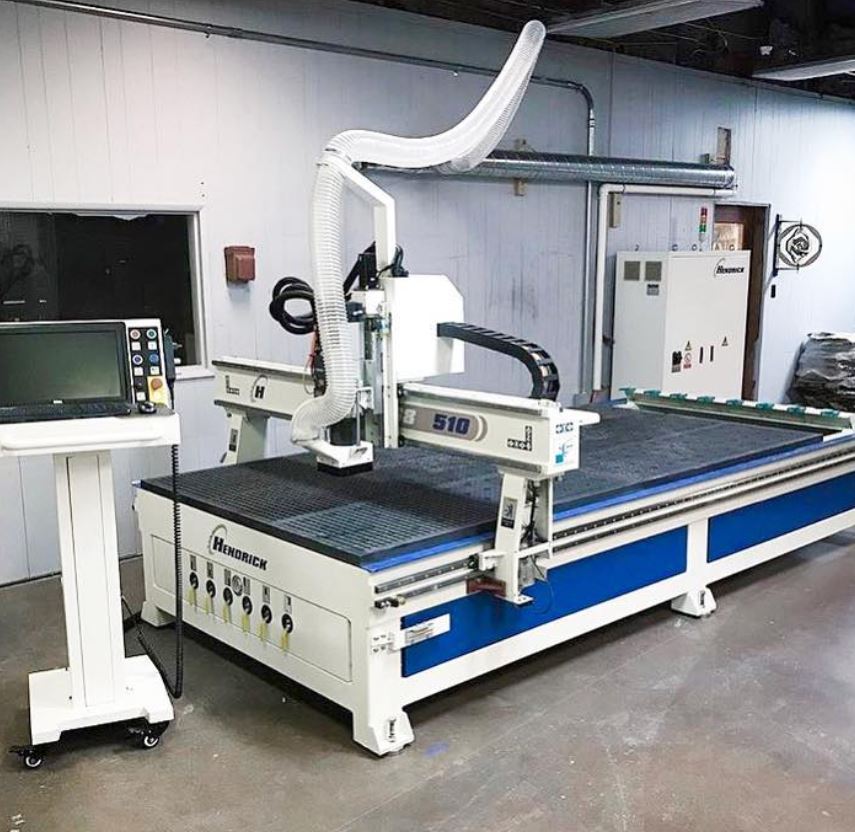Tips for Buying Your First CNC Router
Recent developments in CNC routing technologies continue to open up new opportunities for sign shops. Revolutionary cutting-edge tools and expanded software capabilities are now custom-made specifically for creating and trimming printed graphic signs on rigid as well as more flexible substrates and machining and carving three-dimensional signs and letters.
If you are new to the sign business and are still cutting many of your projects by hand or outsourcing jobs, now is the time to consider a more automated approach in-house.
As with any new purchase, it really pays for you to do your homework and carefully analyze your current situation as well as future goals. While there is a wide array of machines on the market; your daily workflow, desired volume, and your overall bottom line will help determine which type of unit is the best fit for your sign business.
Let’s look at the cost, space, power, workflow, and application concerns that must be addressed before adding a CNC router to a shop’s equipment arsenal. We also dive into the process and length of time it takes to get from ordering the machine to actually creating signs.
When putting together your checklist, it’s only natural to think about the attributes of each device. To answer some of these questions and help take some stress out of the purchasing process, we spoke with a number of the leading suppliers and quizzed them about some of the most important points to consider and questions to ask when looking for a cutting solution.
Mac Grainger, sales manager at Industrial CNC in Hollis, New Hampshire, says that he sees that most serious sign manufacturers who don’t have a CNC router quickly recognize the necessity of acquiring one. “The need to offer a variety of substrates and tools to satisfy their customers’ demands is vital to their success. While printers and plotters have always been sign shop staples, they don’t provide the versatility of a CNC router. Sign buyers today are seeking more creative and unique corporate identity from their sign shop than the same old vinyl lettering and printed banners that have flooded the market. Businesses want to stand out from the crowd and CNC routing allows sign producers to easily offer them a plethora of options.”
Grainger notes that once the need is established, he says that an internet search is probably the first step most people resort to these days and online resources provide a plethora of info. “Unfortunately, as the CNC router market has expanded in recent years, there is an abundance of misleading and completely incorrect info flooding the web. I always recommended working with a manufacturer who is known and participates in your industry. Industry media, trade magazines and associations are also proactive in providing pertinent info. Most CNC routers for the sign industry will perform the same applications, so incorporating a software is a key factor for getting full use from your machine, whether you’re producing channel letter, flat cuts, print-to-cut applications or full three-dimensional carvings.”
Questions to Ask
“There are endless factors to consider when you’re purchasing a CNC router, but here are some of the most important ones: Do you have adequate floor space for the machine and dust collection? Do you require a vacuum lift for a one-man operation, or can you dedicate two people to load and unload large sheets? Does your shop have adequate power for the machine requirements? Most industrial CNC routers require three-phase power,” explains Larry Farris, CNC Specialist at Hendrick Manufacturing, Salem, Massachusetts.
He says that there are really no true project or volume “requirements” when purchasing a CNC router. “There is a CNC for everyone, it’s just a matter of understanding the capabilities and needs of your business. For instance, if you have a smaller operation, you’ll likely only need an entry-level model. There is no job too big or small, you simply need to know what your business truly requires.”
Realizing Profits and ROI
Farris says that ROI varies from business to business and depends on your product, your value, and your markup. “Increased efficiencies and reduced man hours typically make the return evident almost immediately. For example, one of our customers in Alabama immediately cut their production times by 80% and as a result, purchased several more machines.”
If the machine is in stock, you can expect the machine to be delivered and installed within a month. On average, it takes 1-2 days to install a machine, and you can be producing product by the third day. “The learning curve depends on the employees and their previous experience or willingness to learn the different aspects of CNC routing. It’s always good to hire the right person when you have a CNC router in your shop,” Farris says.
Farris says that users are definitely trying to find ways to use their shop real estate effectively, so more compact multi-purpose machines have become increasingly popular. “?We’ve seen our customers do all sorts of cool things with their CNC routers. For example, our routers have been used by IMAX and Disney to cut screens for their movie theaters. Other shops are creating snowboards, guitars, aircraft and even composite capsules for rockets. The possibilities of our CNC machinery are endless, and seeing what they can do never fails to amaze us.”
Where to Begin
Cody Smith, sales manager at CAMaster Inc., Cartersville, Georgia, feels a great starting point is to identify projects that currently are being outsourced and determine if a CNC router can capably handle the work requirements. He then said the next step is to determine what can be processed with each piece of equipment the shop owner is interested in purchasing. Size and power requirements must be considered in this stage. The most flexible and capable piece of equipment in a shop is the CNC router.
“If your competition is able to cut more accurately, process more quickly, provide a wide variety of cutting options and do so inexpensively, they are most likely using a CNC router,” he points out.
Floor Space Important
Smith says that floor space is something else to consider. “CNC routers consume quite a bit of space in a shop. A 4′ x 8′ machine requires at least a 24-inch perimeter around the outside of the machine for workspace. This allows operator space to load and unload material. Dust collection is also a big consideration for your sign shop. CNC routers create a lot dust and the router you buy should be in a closed room or have a dust collection system attached to it. Most machines will come with a dust boot to connect too, but the actual collector must be purchased additionally.”
Smith adds that power is another concern. “Many sign shops only have single-phase 220V power available and access to three-phase may not be easily accessible. This is simply remedied by calling the power company or employing a rotary phase converter.”
He points out that many sign shops find that the addition of a CNC router uncovers many new profitable avenues for business. “Routers cut a variety of substrates for indoor and outdoor signs, dimensional letters, 3D carvings, case goods, trade show exhibits and more. Through additional capabilities, many customers are able to pay their machine off in the first six months. Being that these units don’t call in sick and are incredibly accurate and reliable, customers are able to take on and fulfill more jobs than they ever imagined.”
It’s Not All About Speed
Smith advises that cutting speed alone should not be the main factor when determining which machine to buy. “Most of the time spent running a file is above the material traversing the table from spot to spot, we call this a rapid movement, not cutting the actual file. So, cut speed is not as important as rapid speed. Another example of this is cutting aluminum. Regardless of the capability of your router, most applications specialists will process aluminum at no more than 40 inches per minute (ipm).”
Smith says that the average learning curve is roughly 90 days for a customer to learn how to design and cut on their machine. “Prior CAD or machining experience will be very helpful in shortening this time. Partnering with the right software company that provides plenty of tutorials and support will be key with cutting this time down. Also, studying your material and the best bits for cutting it will also shorten the learning curve.
Vision Registration Systems
Smith says one of the biggest trends in the sign industry is the advances in vision registration systems. “Most sign shops that do large format printing are familiar with these. They are installed from the factory and allow the controller to read registration marks that are printed out on the material and cut without the use of G-code. This drastically reduces the learning time for operators and improves the workflow for the sign shop. Many times, these cameras are used with oscillating knives that effectively cut fabrics, vinyl decals, coroplast, PVC and more.”
Smith notes when shopping for a router, their Cobra Elite Series of CNC routers from CAMaster is a new generation heavy-duty machine loaded with standard features normally found on more expensive machines. It features an all-steel frame and gantry, digital AC servo-drive system, 12 HP HSD spindle, Automatic Tool Change (ATC) and much more. It also offers 1,500 IPM cut speed and 2,500 IPM rapid traverse speed. Upgrades include oscillating tangential knives, and Optiscout visual registration systems for cutting accuracy.
Smith adds that CAMaster’s Panther CNC router offers incredible performance and versatility in a compact footprint. “The Panther machine was built with the signmakers in mind, offering the best in quality, performance, and flexibility. Upgrades also include ATC, oscillating tangential knives, and Optiscout visual registration systems for cutting accuracy.”
Lastly, the CAMaster Stinger series is an industrial-grade, highly affordable CNC Router that comes in multiple sizes from benchtop to a 4′ x 8′ tabletop. “The Stinger opens up additional revenue streams for small shops looking for an affordable yet robust CNC router.”
Software: More Intuitive, Affordable
Grainger points out that in recent years there has been a dynamic shift in the CNC industry. “As software has become so affordable and easy to use, long gone are the days of needing a tech school education or the tedium of writing out lines of code to make one run. Today’s easy to use WYSIWYG (what you see is what you get) software does all the tedious work for you. Simply draw or import the shape you want to cut, and fill in the blanks (depth of cut, size of the bit you’re using) the software will make a file for the machine to read, and you’re ready to go.”
He says that users don’t have to abandon their existing design software either. “You can continue to create your designs in Adobe Illustrator, Corel, Flexi Sign, SignLab, Serif, or any program that produces vector drawings. Open your drawing in your router’s CAD/CAM software to enter the material and cutting information and your file is ready to cut. Being able to produce job simulations showing the finished sign in three dimensions from every angle can be a great marketing tool to help sign makers close the sale and also helps set expectations and avoid surprises. Just email a PDF to the customer for approval before the sign is even run.
Best of all, once you’ve made a job, you can cut it again any time you like, and have it come out exactly the same, every single time. You’ll soon develop a library of your sign work and from there you can simply pull up the right file, send it to the machine and let it cut, while you’re free to attend to other tasks.”
Financing
Grainger notes that the average price for a properly outfitted and ready to run the machine that is optimized for sign applications can be had for $20K or less. “With easy financing, we have customers reporting their monthly payment being earned in an hour or two of use and machines paying for itself in a couple of short months. Now, that is an awesome ROI. The days of needing a $40,000-plus budget for investing in a great machine that will last decades of production have gone the way of the dinosaur. To better serve our customers we maintain a volume of available stock in different sizes and configurations. Our average customer has received their machine and is up and routing within days of their order being placed,” he concludes.






